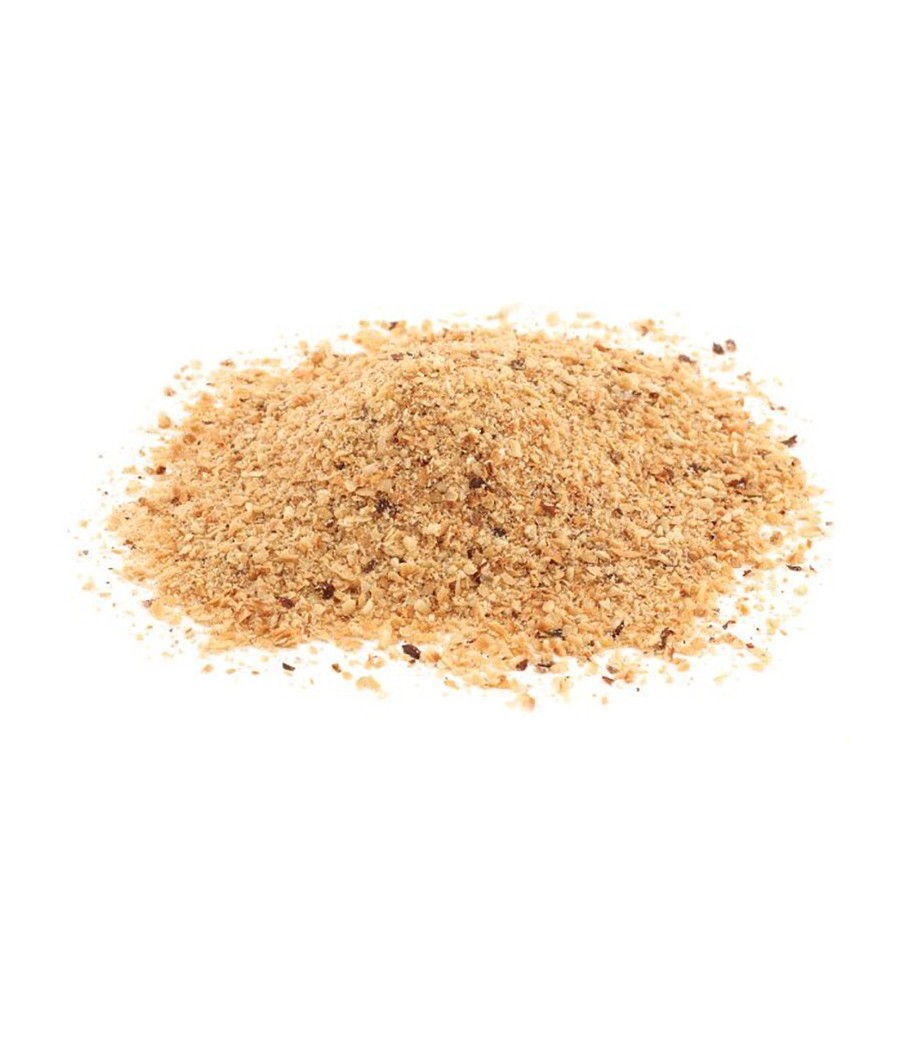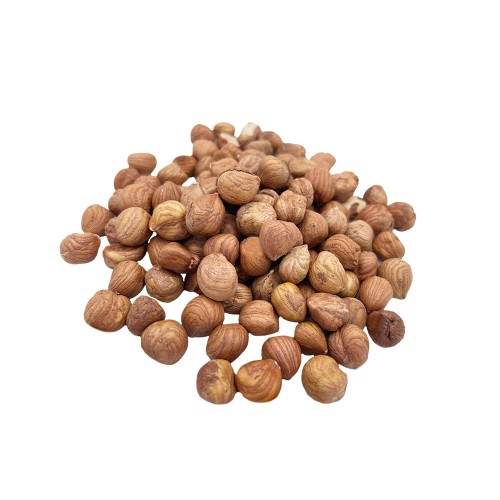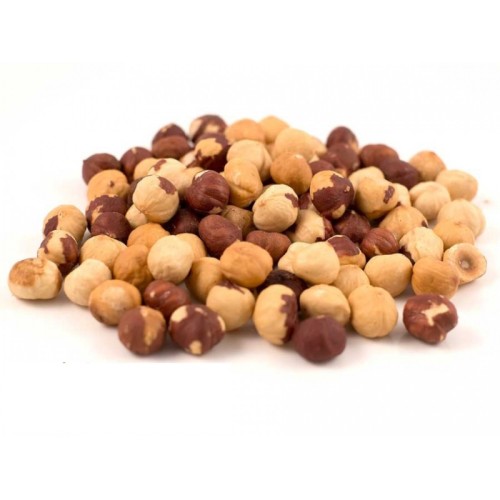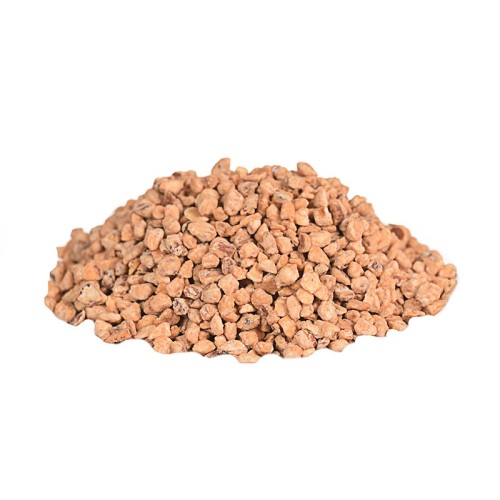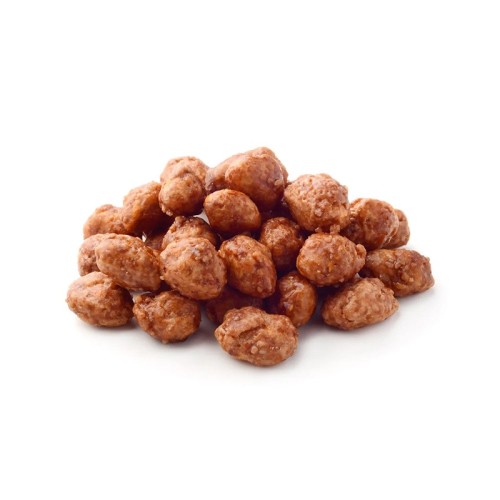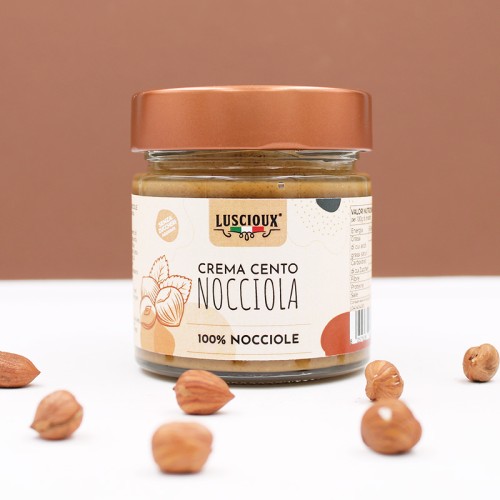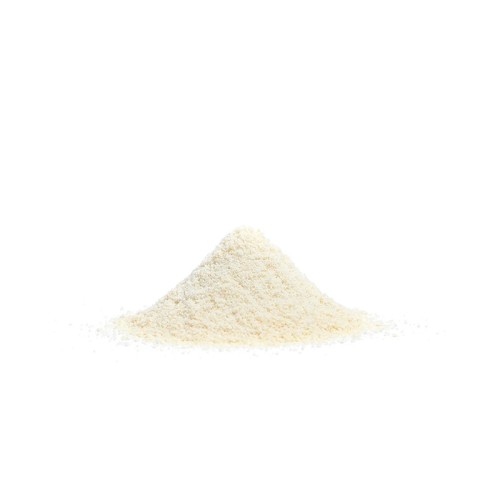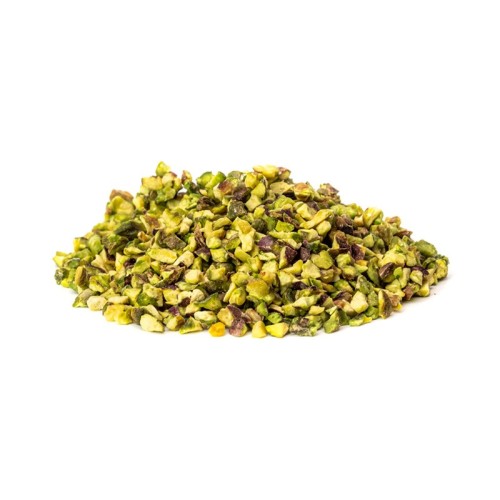Toasted Hazelnut Flour
(€17.78 Per Kg)
 Security policy
Security policy
Transparency and reliability - Encrypted information (SSL Certificate)
 Delivery policy
Delivery policy
Fast shipping with delivery in 1- 4 working days.
 Return policy
Return policy
24/7
This flour is obtained by grinding toasted and peeled hazelnuts. Excellent for the preparation of desserts, creams and ice creams.
Data sheet
- Product
- Hazelnuts
Specific References
- ean13
- 8054134419230
Nutritional values
| Ingredients | Ingredients: HAZELNUTS. May contain traces of PEANUTS and other NUTS. |
| Method of conservation | Keep in a cold and dry place. |
| Nutrition declaration | average values per 100 g: |
| Power | 2838kJ / 687kcal |
| Fats | 63 g |
| of which saturated fatty acids | 5.2g |
| Carbohydrates | 7.6g |
| of which sugars | 3.8g |
| Fibers | 9.0 g |
| Protein | 18 g |
| Salt | 0 g |
| Copper | 1.7 mg (170% NRV*) |
| Manganese | 4.3 mg (215% NRV*) |
| Vitamin E | 19 mg (158% NRV*) |
| Directions | The advice given IS NOT IN ANY WAY TO BE CONSIDERED OF MEDICAL/PRESCRIPTIVE VALUE. The information provided is for informational and informative purposes only, therefore they are not intended in any way to replace medical advice. In the presence of pathologies you should always consult your doctor. |
| Origin | Italy |
| Nutrients | Manganese, Copper, Vitamin E |
| Vnr | *Nutritional Reference Value |
| Label and packaging | The images are included for illustrative purposes, the product may undergo changes based on stock availability and the selected weight. |
| Product | Hazelnuts |
Curiosity
The hazelnut (Corylus avellana) is a plant belonging to the very ancient Betulaceae family, which lives and bears fruit in the wild throughout Europe, especially on the hills and mountain slopes, along paths and streams. In its natural state, the hazel takes on a bushy appearance, with a maximum height of 5-6 m. The leaves are oval-heart-shaped with a serrated margin, about 6-10 cm wide. The flowering period for the hazel is certainly "out of season", as it occurs in the middle of winter. The fruit (the well-known hazelnut) is wrapped in bracts from which it is released when ripe. It is used both in food and in the color industry and in perfumery.
The cultivation is located in four main areas: one of the most important is located on the southern coast of the Black Sea, the second in Italy, the third in Spain and the fourth in the western part of North America.
Hazelnuts are generally eaten dried and lightly toasted to make it easier to remove the surface film and to further develop the aromas they contain.
The major users of hazelnuts are the Swiss (2 kg/person per year), who use them as an ingredient for chocolate.
Every year in Massaquano (NA) on December 12, for the eve of Saint Lucia, the traditional and centuries-old throwing of hazelnuts is held from the roof of the church, adopted as a symbol of the pupils of the eyes, in honor of the saint patroness of sight.
Appreciated by the Greeks and Romans for its nutritious fruit, the hazelnut was considered a plant with beneficial or even magical qualities , so much so that it was frequently associated with mystery and the supernatural: in fact, the wand of the gods, the one used to find water underground, the one for identifying veins of precious metals and for discovering hidden treasures was made of hazelnut wood. In northern Europe it was believed that the core protected from lightning and witches. Hazelnuts were considered by the Chinese one of the 5 sacred nourishments given by God to man and were indicated by the Greek physician Dioscorides as a remedy against the bites of poisonous animals and to cure verminosis, persistent cough and uricemia; in marriage ceremonies they were the emblem of fertility. Virgil recalls that the hazel was honored more than the vine, myrtle and even the laurel; it was considered by the Romans a symbol of peace and reconciliation.
The hazelnut is rich in unsaturated fats , fibers, minerals, vitamins and phytonutrients. For this reason, its regular consumption is generally associated with a reduction in the concentration of cholesterol in the blood and a decrease in cardiovascular risk. Thanks to the high content of Vitamin E, the natural antioxidant par excellence, regular consumption of hazelnut counteracts the action of free radicals, helping to preserve beauty and health.
Energetic, nourishing and remineralizing, the hazelnut is perfect for those who practice sports, those who need a lot of concentration or simply feel "down" both physically and mentally.
Despite the high caloric intake, if taken in the recommended doses - about 15 grams per day - hazelnuts would not cause any weight gain, since they contain many fibers and proteins with a low glycemic index, they promote the sense of satiety by reducing introduction of other calories and leads to an increase in energy expenditure. Furthermore, hazelnuts are particularly appreciable for their lipid profile: about 40% of the lipid content of hazelnuts is made up of monounsaturated fatty acids, with a higher monounsaturated/polyunsaturated ratio compared to almonds and walnuts. These monounsaturated fats help keep LDL cholesterol (so-called "bad" cholesterol) at low levels in the bloodstream, while raising HDL cholesterol ("good" cholesterol) levels.
In a study conducted in New Zealand, a sample of slightly hypercholesterolemic volunteers was taken, asking them to add a quantity of hazelnuts equal to 30 g for 4 weeks to their normal diet. The results showed the positive effect of the consumption of hazelnuts on the lipoprotein profile and on the concentrations of α-tocopherol1.
The hazelnut is included in the list of food allergens (attachment 2 section III of Legislative Decree 109/1992 and subsequent amendments).
1 Tey SL, Brown RC, Chisholm AW, Delahunty CM, Gray AR, Williams-SM. Effects of different-forms of-hazelnuts- on bloodlipids -and-α tocopherolconcentrations- in mildlyhypercholesterolemicindividuals. European Journal of ClinicalNutrition [2011, 65(1):117-124]
Sources
Nutspaper “Hazelnut” 3/2010
Nutspaper "Hazelnuts" 2/2013
History
The name of the genus comes from the Greek κορις = helmet, due to the shape of the involucre which covers the fruit, or from kurl, Celtic name of the plant, while the epithet of the avellana species comes from Avella, a city famous since antiquity for the goodness of its hazelnuts. The hazel was among the first fruit trees used and then cultivated by man to satisfy his food needs: its appearance in the Mediterranean and the Balkans dates back to prehistoric times, it is one of the main tree species that have colonized the lands it emerged after the last glaciation (10,000 years ago), therefore long before the olive tree and the vine.
The deepening of cultivation and propagation techniques took place as early as the 4th century BC, but the cultivation and diffusion of the most interesting varieties for production and commercial purposes only took place after 1900, when it began to be cultivated intensively.
Turkey , with about 800,000 tons, is the world's leading producer (over 70%) and the international reference price of hazelnuts depends directly on production fluctuations and exports from this country. Italy is the second largest producer, with over 110,000 tons: the quality of Italian hazelnuts is internationally recognized; in particular the round fruit varieties, such as the Tonda gentile trilobata in Piedmont and the Tonda gentile romana in the Viterbo area, represent qualitative excellence that determine a price in themselves. The major users of hazelnuts are the Swiss (2 kg/person/year), who use them as an ingredient in chocolate.
The most extensive hazelnut cultivations are located in Turkey, Italy and Spain, respectively with 379,000, 68,348 and 22,600 hectares in 2005; these surfaces together make up over 85% of the world's hazelnut groves. Analyzing the average unitary yields per hectare, it is observed that the USA holds the record with 3.78 tons equal to more than double the European average; this is mainly due to the massive mechanization of American hazelnut cultivation and the high use of fertilizers and plant protection products. France and Georgia achieved yields of 2 tons, followed by Turkey and Italy with 1.88 and 1.74 tons respectively. In Asia, as well as in Azerbaijan, Georgia, Uzbekistan, and part of Turkey, hazelnut growing is present in Iran and China with production sizes of 24,000 tons each. With regard to the international market, Italy is second after Turkey for the export of shelled hazelnuts, the form in which marketing mainly takes place. In the two-year period 1995-96, only 2.4% of world production was exported in shell.
Sources
Nutspaper “Hazelnut” 3/2010
Nutspaper "Hazelnuts" 2/2013
storage
You can store hazelnut flour in cool, dry places, away from heat and humidity sources. Here are 4 useful tips:
- The ideal condition for keeping hazelnut flour is in a refrigerated environment . The toasted hazelnut flour can also be stored without problems at room temperature during the winter given the low temperatures. During the summer, on the other hand, it is advisable to keep it in the fridge or in the coolest possible places, as the increase in temperatures could favor the deterioration of the products.
- The ideal container in which to store hazelnut flour is glass . In fact, thanks to its constitution it is impenetrable to chemical and gaseous agents, and having excellent thermal insulating capacity it maintains the initial temperature for a longer time compared to other materials. If the glass is colored, all the better: using colored glass prevents the entry of some wavelengths of light (including ultraviolet light) and therefore some nutritional and organoleptic characteristics remain unaltered.
- The type of closure of the container is also important: an airtight cap ensures that the food is protected from excessive contact with oxygen which can lead to lipid oxidation and which can be essential for aerobic bacteria.
- The environment should always be well ventilated : by ventilating the rooms, the internal humidity that escapes from the window is kept under control, guaranteeing the right balance, which helps to discourage the onset of moulds.
Property
100 g of Italian hazelnut flour contain:
- 4.3 mg of Manganese , equal to 215% of the NRV (reference nutritional value);
- 1.7 mg of Copper , equal to 170% of the NRV;
- 19 mg of Vitamin E , equal to 158% of the NRV
No customer reviews for the moment.

